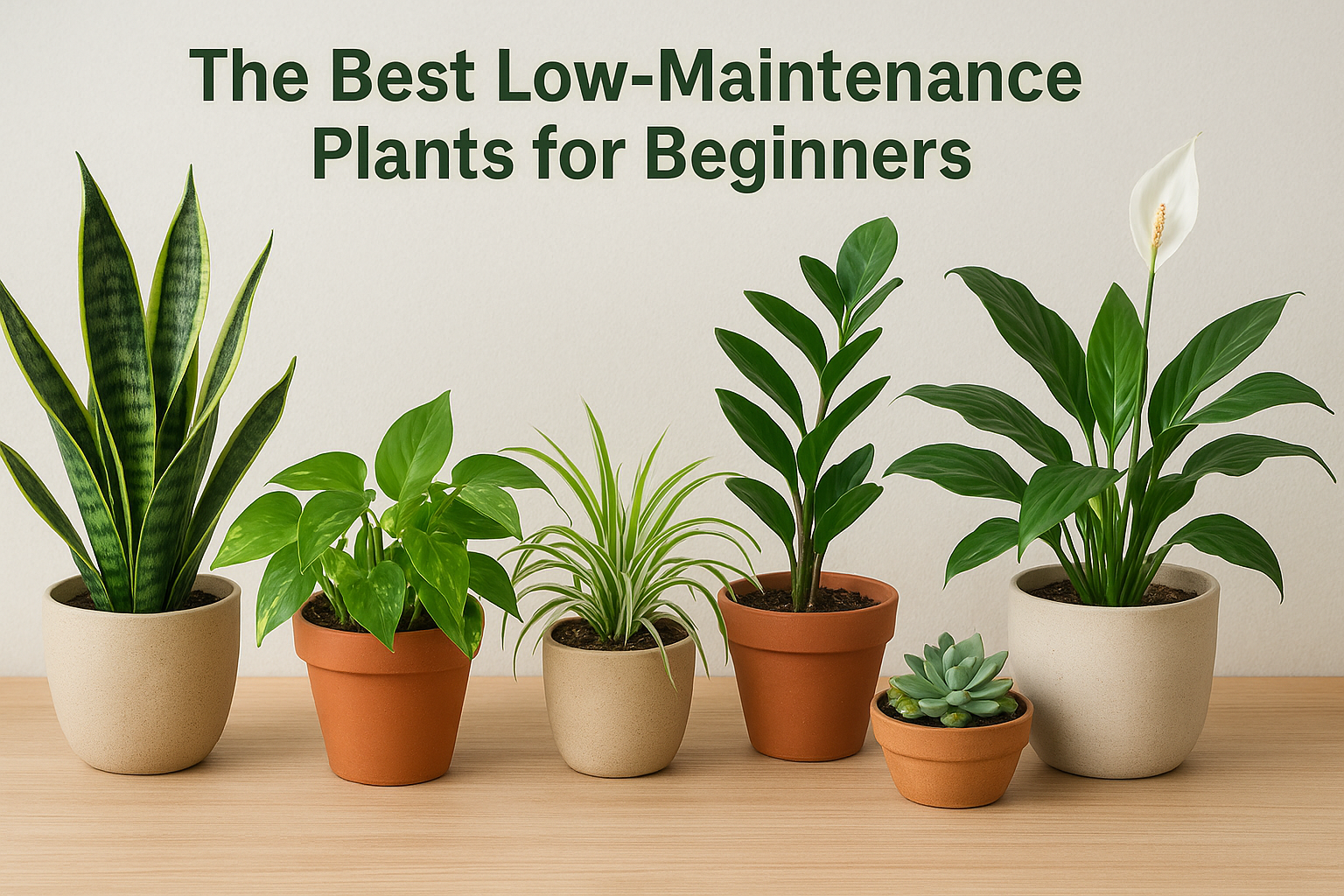Starting your journey with plants doesn’t have to be complicated. If you’re new to plant care, the key is to choose varieties that are hardy, forgiving, and require minimal attention. Low-maintenance plants are perfect for beginners because they tolerate occasional mistakes while still thriving indoors.
In this guide, you’ll discover some of the easiest plants to care for, why they’re ideal for beginners, and how to keep them happy in your home.
Why Choose Low-Maintenance Plants?
Taking care of plants should be enjoyable, not stressful. Low-maintenance plants:
- Adapt easily to different environments.
- Require less frequent watering.
- Tolerate a variety of light conditions.
- Are resistant to pests and diseases.
By starting with these, you’ll gain confidence and experience before moving on to more delicate species.
Snake Plant (Sansevieria)
Often called mother-in-law’s tongue, the snake plant is one of the most resilient houseplants.
- Light: Thrives in low light but also tolerates bright conditions.
- Water: Only needs watering when the soil is completely dry.
- Benefits: Purifies indoor air by removing toxins.
Its upright, sword-like leaves also make it a striking decorative piece.
Pothos (Epipremnum aureum)
Pothos is another beginner-friendly choice. Its trailing vines can grow long and add a touch of greenery to shelves or hanging baskets.
- Light: Grows well in low to medium light.
- Water: Can survive irregular watering.
- Benefits: Extremely adaptable and easy to propagate from cuttings.
Spider Plant (Chlorophytum comosum)
Spider plants are famous for their arching leaves and baby plant “pups.”
- Light: Prefers bright, indirect light but tolerates lower levels.
- Water: Likes consistent moisture but recovers quickly if you forget.
- Benefits: Produces offshoots that can be replanted to create new plants.
ZZ Plant (Zamioculcas zamiifolia)
The ZZ plant is almost indestructible. With its waxy, deep-green leaves, it brings elegance to any room.
- Light: Tolerates low light, making it perfect for offices or dim corners.
- Water: Needs very little water; drought-tolerant.
- Benefits: Requires minimal attention, making it perfect for busy lifestyles.
Succulents
Succulents are compact, attractive, and require little care.
- Light: Need bright light, ideally near a sunny window.
- Water: Store water in their leaves, so they only need watering every few weeks.
- Benefits: Offer variety in shapes, colors, and textures.
Peace Lily (Spathiphyllum)
Peace lilies are great for beginners who want a plant that flowers indoors.
- Light: Prefers medium to low light.
- Water: Likes moist soil but signals when it needs water by drooping slightly.
- Benefits: Elegant white blooms and excellent air-purifying qualities.
Tips to Keep Low-Maintenance Plants Healthy
- Don’t overwater. Most beginner-friendly plants prefer being slightly dry.
- Check light placement. Even hardy plants have limits—observe how they react.
- Dust leaves occasionally. This keeps them clean and improves photosynthesis.
- Use the right pot. Choose pots with drainage holes to prevent root rot.
Growing Your Confidence
As you care for these easy plants, you’ll develop habits and confidence that prepare you for more challenging species. Start with one or two, watch them thrive, and expand your collection over time.
Final Thoughts: A Stress-Free Start
The best way to begin your plant journey is with forgiving companions like snake plants, pothos, spider plants, ZZ plants, succulents, and peace lilies. They’ll reward you with growth, beauty, and a healthier living space—without demanding constant attention.
Remember, success with plants isn’t about perfection. It’s about observation, patience, and enjoyment. With these low-maintenance options, you’ll discover that caring for plants at home can truly be stress-free and fun.

